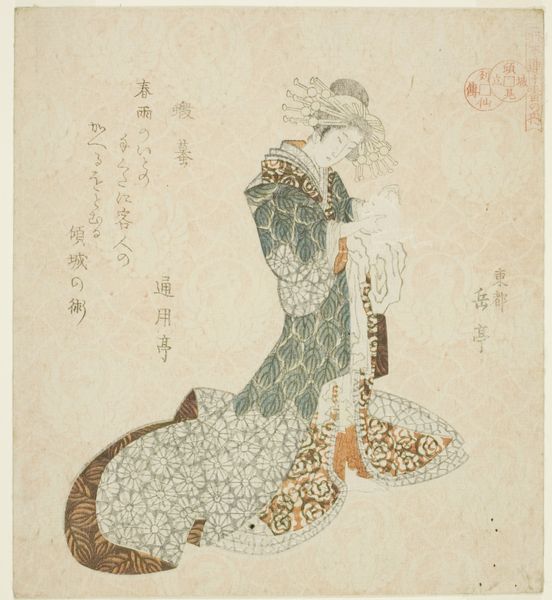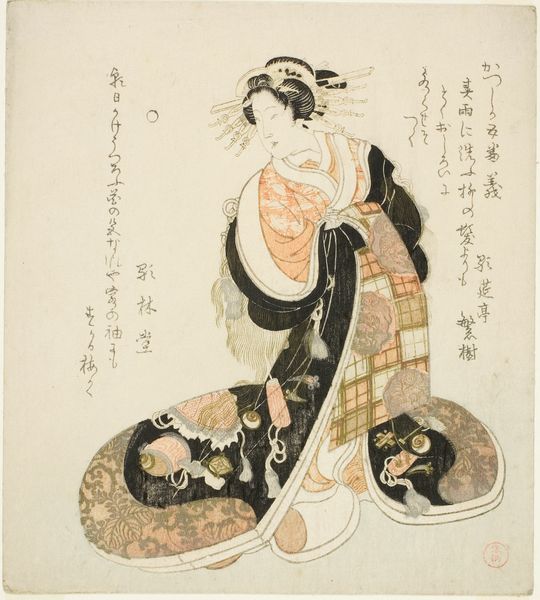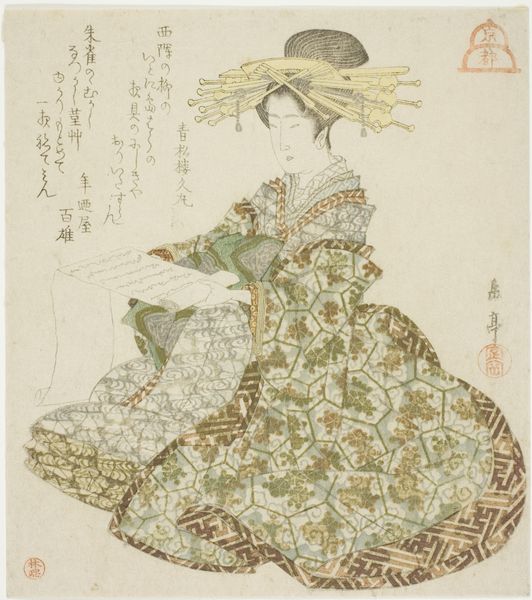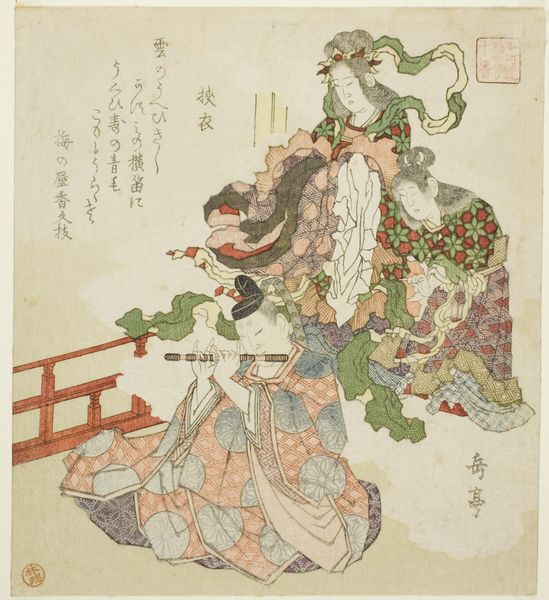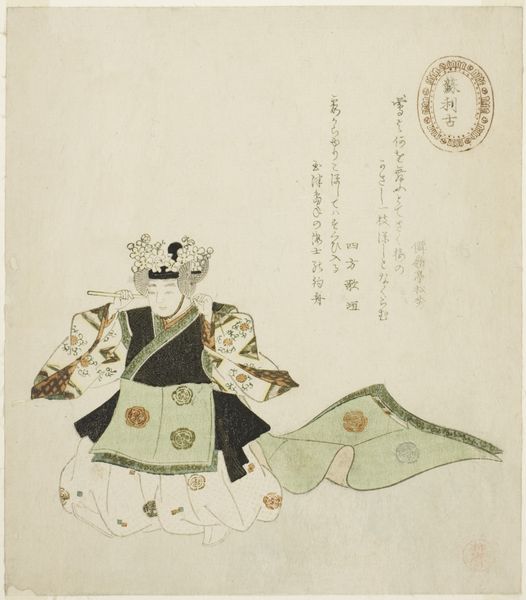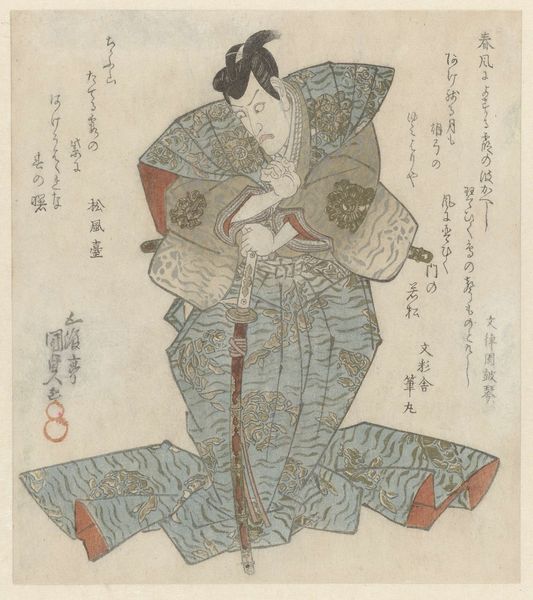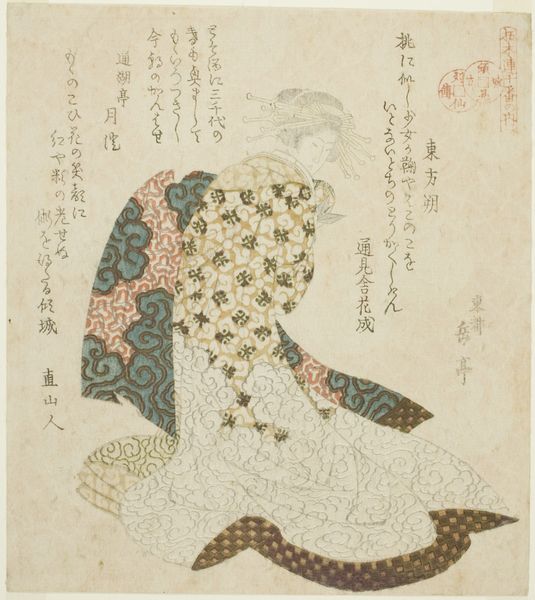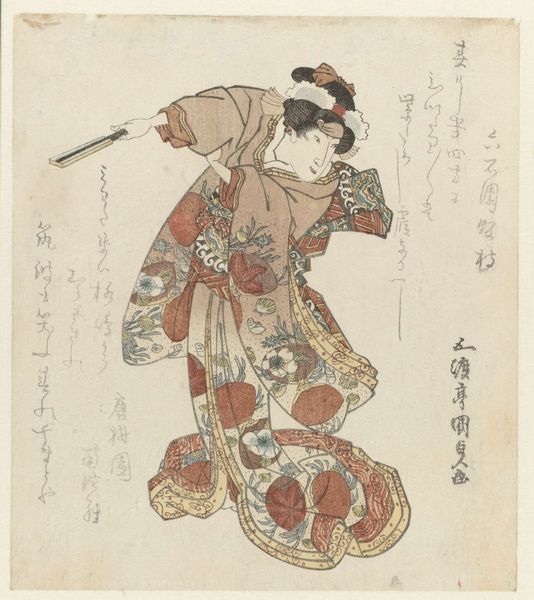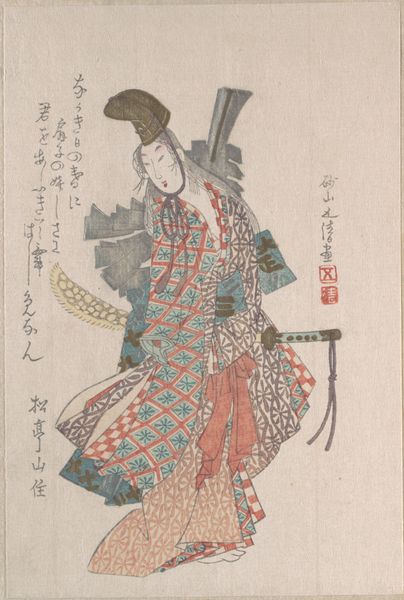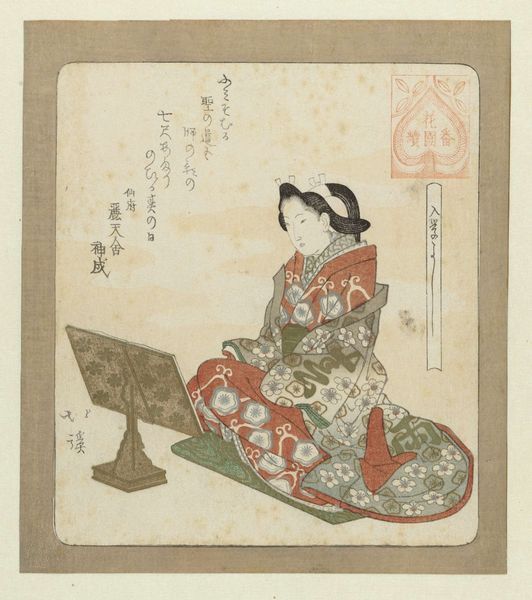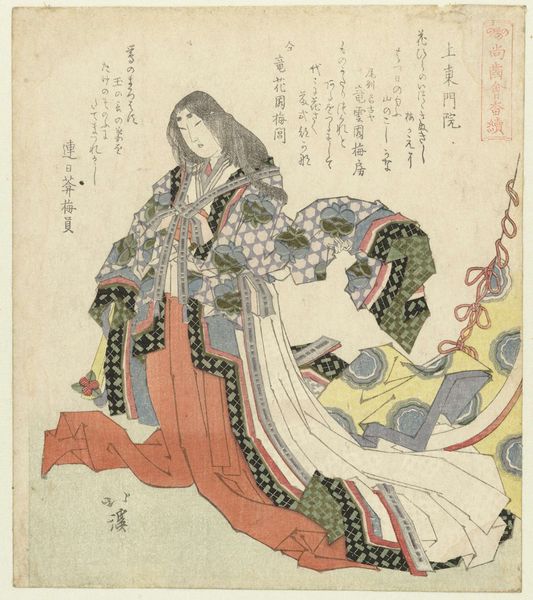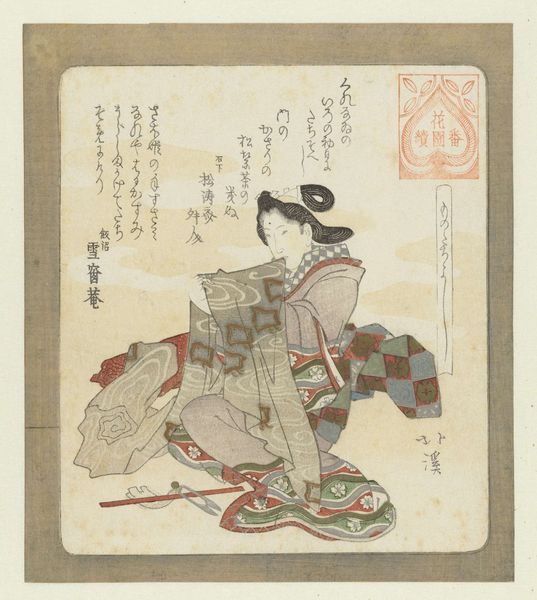
print, woodblock-print
#
portrait
#
narrative-art
# print
#
asian-art
#
ukiyo-e
#
figuration
#
woodblock-print
Dimensions: height 206 mm, width 184 mm
Copyright: Rijks Museum: Open Domain
Editor: This woodblock print from around 1821 or 1822, titled "The Immortal Gama," is by Yashima Gakutei and resides in the Rijksmuseum. The patterns on the woman’s kimono feel very detailed, especially compared to the plain background. How should we interpret this work within the context of its time? Curator: It's important to see this not just as a pretty picture, but as a social commentary. Ukiyo-e prints, while popular, also depicted a world of transient pleasures often associated with the courtesans of the pleasure districts. Notice the subject is Gama Sennin, who represents someone attaining enlightenment, usually portrayed as male and semi-clothed, mastering snakes or toads to purify mind and body. So why is Gama depicted here as an elegant woman of the court? Editor: A subversion of expectation? Was Gakutei commenting on female empowerment through this unconventional association? Curator: Precisely! We could explore how Gakutei is reclaiming and reimagining ideals by embodying enlightenment into someone largely ignored or exploited at the time, while also elevating Ukiyo-e portraiture to reference historical, literary and spiritual narrative, defying its label as “low brow” art. Note too how he makes us complicit: The inscription and stamp situate the viewers into knowing roles as cultural consumers in the present who were literate and economically privileged to even be viewing this artwork. Editor: That’s really thought-provoking! I hadn't considered the intersection of gender and class within that depiction of enlightenment. Curator: Considering Gama as a cultural lens broadens our understanding beyond traditional art historical canons. It highlights how artistic choices can reflect larger social, cultural and even political dialogues and concerns! Editor: Thank you for guiding me through those observations. Now I see how one character embodies resistance by appropriating dominant systems of beliefs to reframe agency.
Comments
No comments
Be the first to comment and join the conversation on the ultimate creative platform.

